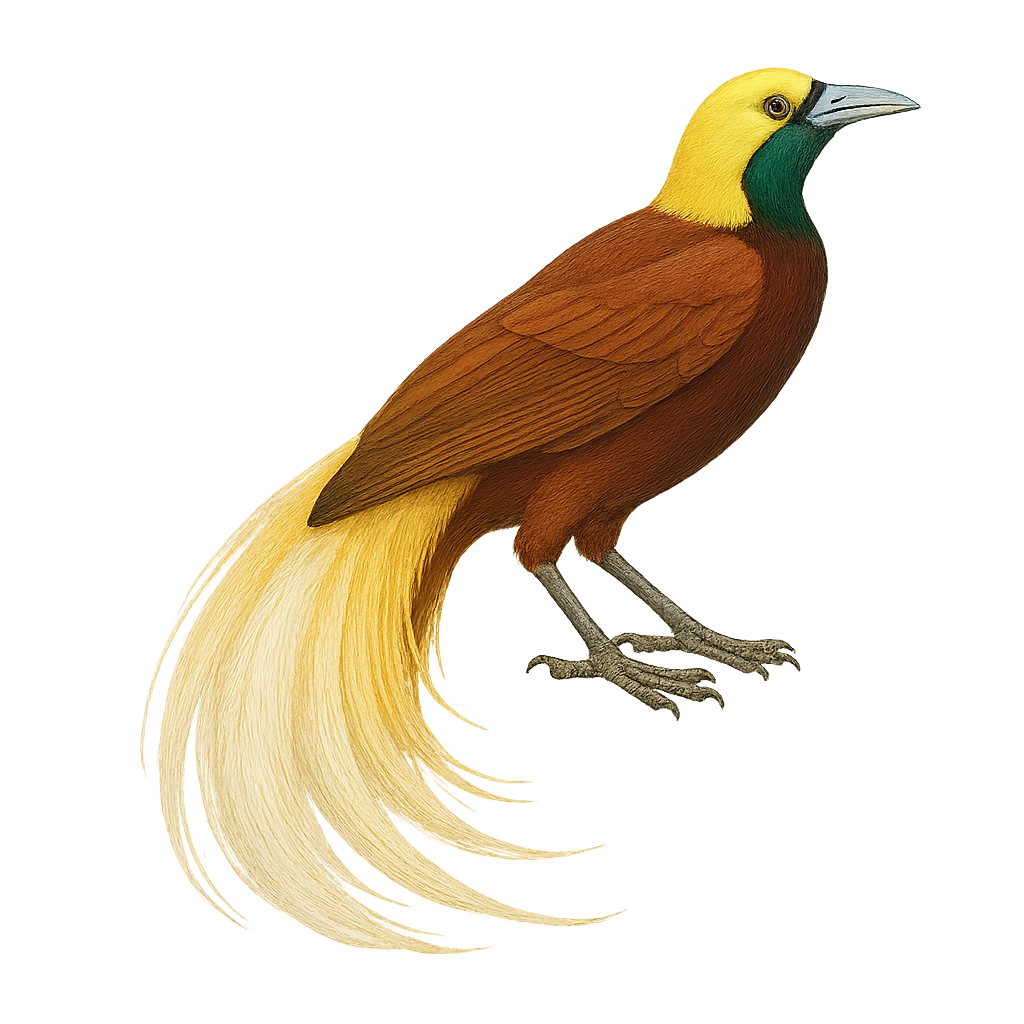Your wildlife photography guide.
Explore the goldie's bird-of-paradise in detail, study its behavior, prepare your shots.
Where to observe and photograph the goldie's bird-of-paradise in the wild
Learn where and when to spot the goldie's bird-of-paradise in the wild, how to identify the species based on distinctive features, and what natural environments it inhabits. The WildlifePhotographer app offers tailored photography tips that reflect the goldie's bird-of-paradise’s behavior, helping you capture better wildlife images. Explore the full species profile for key information including description, habitat, active periods, and approach techniques.
Goldie's Bird-of-paradise
Scientific name: Paradisaea decora

IUCN Status: Vulnerable
Family: PARADISAEIDAE
Group: Birds
Sensitivity to human approach: Suspicious
Minimum approach distance: 10 m
Courtship display: June to July
Incubation: 18-20 jours
Hatchings: June to August
Habitat:
Tropical rainforests, secondary forests
Activity period :
Primarily active during the day, with peak activity in the morning and late afternoon.
Identification and description:
The Goldie's Bird-of-paradise, or Paradisaea decora, is a bird species from the Paradisaeidae family, endemic to Fergusson and Normanby islands in Papua New Guinea. This magnificent bird is renowned for its dazzling plumage and spectacular courtship displays. Males boast golden-yellow and emerald-green feathers, with ornamental plumes that unfurl during their courtship dances. Females, more subdued, have olive-brown plumage. The Goldie's Bird-of-paradise primarily inhabits tropical rainforests, feeding on fruits, insects, and small animals. Unfortunately, this species is threatened by deforestation and hunting, leading to its classification as vulnerable by the IUCN.
Recommended lens:
400 mm – adjust based on distance, desired framing (portrait or habitat), and approach conditions.
Photography tips:
To photograph the Goldie's Bird-of-paradise, it's advisable to use a telephoto lens of at least 400mm to capture the details of its plumage without disturbing it. Look for areas in the forest where males perform their courtship displays, usually early in the morning. Be patient and discreet, as these birds can be suspicious. Use a tripod to stabilize your camera and wait for the right moment to capture their graceful movements.
The WildlifePhotographer App is coming soon!
Be the first to explore the best nature spots, track rutting seasons, log your observations, and observe more wildlife.
Already 1 439 wildlife lovers subscribed worldwide

